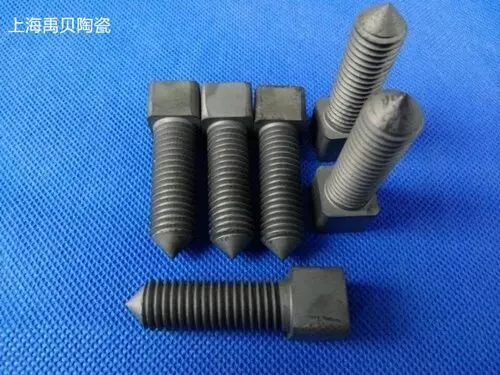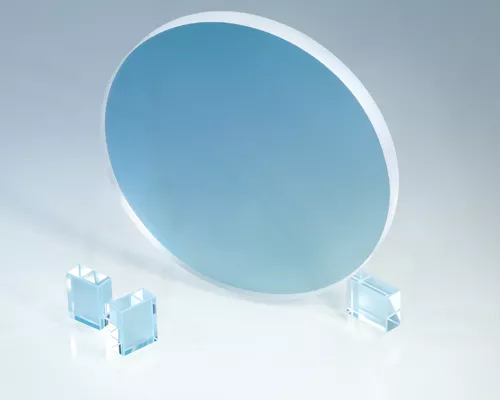Modern aviation engines commonly use nickel-based high-temperature alloys for their high-pressure turbines, which have a maximum working temperature of about 1100℃. The turbine inlet temperature of fourth-generation aviation engines has already reached 1600℃, and the temperature at the material surface has also reached 1100℃. In this extreme high-temperature environment, the material is prone to softening, which makes it unable to withstand the stress generated by high-speed movement. In addition, the gas temperature of future engines may exceed 2000℃, and the temperature at the material surface may be above 1500℃. Therefore, relying solely on nickel-based high-temperature alloy materials is not enough to meet the requirements, and thermal barrier coatings are needed to further reduce the working temperature of the materials.
The main function of thermal barrier coatings is to reduce the working temperature of high-temperature components, prevent high-temperature corrosion of components, improve the operating temperature and thermal efficiency of engines, reduce exhaust emissions, save fuel, and extend the service life of components. The thermal barrier coatings of modern aviation engine high-pressure turbines mainly use advanced ceramic materials, which have high melting points, high strength, low thermal conductivity, and excellent performance.
1. Structure of Thermal Barrier Coatings
Thermal barrier coatings mainly include double-layer structure, multilayer structure, and gradient structure.
① The double-layer structure is simple, but the difference in the thermal and physical properties of metals and ceramics makes it prone to shedding during use.
② Compared with the double-layer structure, the multilayer structure has better oxidation resistance, but the improvement in thermal shock resistance is not significant. Moreover, the manufacturing process is complex, and its repeatability and reliability are poor.
③ The chemical composition, microstructure, and mechanical properties of the gradient coating change continuously, achieving the best performance matching between the ceramic coating and the high-temperature alloy. The combination of the two increases the strength and reduces the thermal stress, effectively preventing the coating from peeling off.
2. Basic Requirements for Thermal Barrier Coating Materials
The thermal conductivity, thermal expansion coefficient, and high-temperature phase stability are the most important requirements of thermal barrier coating materials. The basic requirements for thermal barrier coating materials are as follows:
① High melting point
② No phase change between room temperature and working temperature
③ Low thermal conductivity
④ Good chemical stability
⑤ The thermal expansion coefficient matches the metal substrate
⑥ High bonding strength with the metal substrate
⑦ A low sintering rate
3. Materials Suitable for Thermal Barrier Coatings
① Alumina: Alumina has been eliminated from the market because of its relatively high thermal conductivity, small thermal expansion coefficient, and high elastic modulus, which result in poor insulation and thermal shock resistance.
② Zirconia: Zirconia has a high melting point, good high-temperature chemical stability, low thermal conductivity, a thermal expansion coefficient similar to that of the metal substrate material, and excellent mechanical properties. It is currently the most widely used material. However, zirconia undergoes a phase change at 1180℃, with a volume expansion of 3%~5%, so stabilizers such as calcium oxide, magnesium oxide, yttrium oxide, cerium oxide, silicon oxide, and niobium oxide need to be added.
③ Rare earth zirconates: Currently, research on rare earth zirconates mainly focuses on the zirconates A3+2B4+O7 with a perovskite structure. This type of zirconate has a lower thermal conductivity than YSZ and higher high-temperature stability.
④ Rare earth cerates: Compared with rare earth zirconates, rare earth cerates have a lower melting point than ZrO2 because of the addition of CeO2, which theoretically gives them a higher thermal expansion coefficient, but research in this area is limited.
⑤ Rare earth tantalates: Compared with zirconia ceramic materials, rare earth tantalates are more efficient, with a capacity of 2~3 times that of zirconia, allowing the material to withstand temperatures 200-300℃ lower. Its texture is also softer than zirconia, allowing it to withstand more stress. In about 2018, relevant Chinese units successfully developed a new generation of rare earth tantalate high-temperature iron-boron phase transition ceramic materials, which can effectively improve the turbine inlet temperature of domestic aviation engines, laying a solid foundation for the performance upgrade of domestic aviation engines.
4. Preparation Methods of Thermal Barrier Ceramic Coatings
① Electron beam physical vapor deposition (EB-PVD) method: This method was first used by the United States in the early 1980s to manufacture high-quality thermal barrier coatings in the laboratory. Russia and Ukraine later used this method to coat thermal barrier coatings on the rotors of military aircraft. The EB-PVD method uses a high-energy beam to heat and vaporize the ceramic source, and the ceramic vapor is deposited on the substrate in atomic units. The coating structure consists of columns perpendicular to the surface of the substrate, and the columns are metallurgically bonded to the substrate.
② Laser cladding method: This method uses a high-power laser to directly irradiate ceramic or metal powder, melts it, and then rapidly solidifies it on a metal substrate to form a coating. The ceramic is metallurgically bonded to the metal substrate, forming a columnar structure perpendicular to the surface. By using laser remelting plasma spraying, the pores in plasma coatings can be sealed to improve the corrosion resistance of the plasma coatings. The structure after remelting is fine-grained columnar crystals perpendicular to the surface, which enhances the bonding strength between the ceramic and the substrate.
③ Self-propagating high-temperature synthesis (SHS) method: This method is a new technology for synthesizing materials. It ignites the reaction by heating the raw material powder in a local area, releasing a large amount of heat to sequentially induce chemical reactions in adjacent layers, thereby causing the reaction to spread automatically. The feature of this method is that it generates an extremely high temperature during the reaction, up to 4000℃, and the combustion wave moves quickly (0.1~25cm/s), with high product purity, efficiency, low energy consumption, and a relatively simple process.
④ Plasma spraying method for thermal barrier ceramic coatings: This method sends metal or ceramic powder into a high-temperature and high-pressure plasma flame, which melts and sprays onto the substrate. It solidifies on the substrate at a cooling rate of about 106K/s. The particles are mechanically interlocked and flattened to form a coating. The characteristic structure of plasma-sprayed coatings is that they contain many pores and microcracks, which can relieve thermal stress and improve the thermal fatigue life of the coating.
Declaration: This article is provided by CERADIR™ users or obtained from Internet, the content does not represent the position of CERADIR™. We are not responsible for the authenticity/accuracy of the article, especially the effects of the products concerned. This article is for study only, it does not constitute any investment or application advice. For reprinting, please contact the original author. If it involves the copyright and/or other issues, please contact us and we will deal with it asap! CERADIR™ has the interpretation of this declaration.







